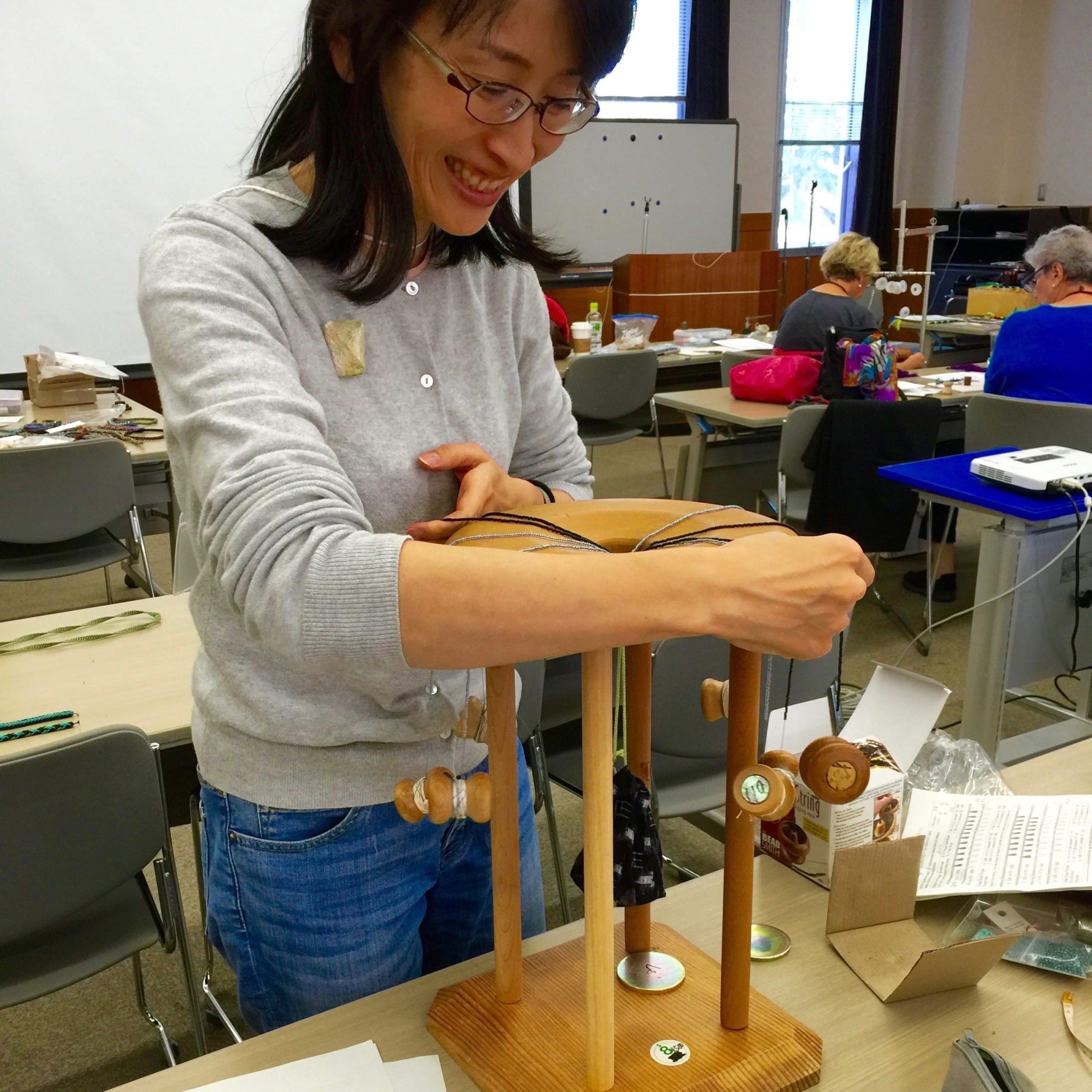Pronounced (ma-ru-dye).
The marudai is considered the most versatile of the five basic types of kumihimo braiding stands, or dai. The word marudai comes from Japanese words maru 丸 meaning “round,” and dai 台 meaning “stand.” However, most braiders in the US are introduced to kumihimo through the use of the foam disk and although they are experienced in the art of kumihimo they may not be familar with the uses and advantages of the marudai. A Marudai is a round-top braiding stand used to make a wide variety of kumihimo braids including round, square, rectangular, flat, triangular, and more. It is the fastest, most versatile and efficient means of creating braids. It is at least twice as fast as the foam disk and offers infinite creative opportunities, many of which are not possible on the foam disk.
The marudai is believed to date back to the early Edo period (1603-1868). However, round-top braiding stands are not unique to Japan; they exist in other Asian cultures as well as in Scandinavia and Europe. A traditional Japanese-style marudai is 40 cm – 50 cm (16″-20″) tall. The height is intended for the braider to be in a kneeling position on a tatami mat or seated on a low stool. Currently, it is more often placed on a table top with the braider using it in a standing position. The Western-style marudai has been adapted to be used while sitting in a chair. It is typically about 65 cm or 26” tall. A 30” tall marudai has recently become a popular height in the US. Both versions can be raised on a stool or table top in order to be worked while standing.
Parts of the marudai:
• Kagami (Mirror) – The round surface or top of the marudai.
• Hekomi (well of the mirror) – A depression in the surface of the mirror leading to a central hole through which the working fibers pass. It is an important design component which allows the fibers to fall into place with little to no friction near the point of braiding.
• Kagami no ana (central hole) – the hole through which the fibers pass as the braid is worked.
Many braiders in Japan and those skilled at woodworking have made their own marudai. Many DIY marudai plans and ideas can be found on the internet.

